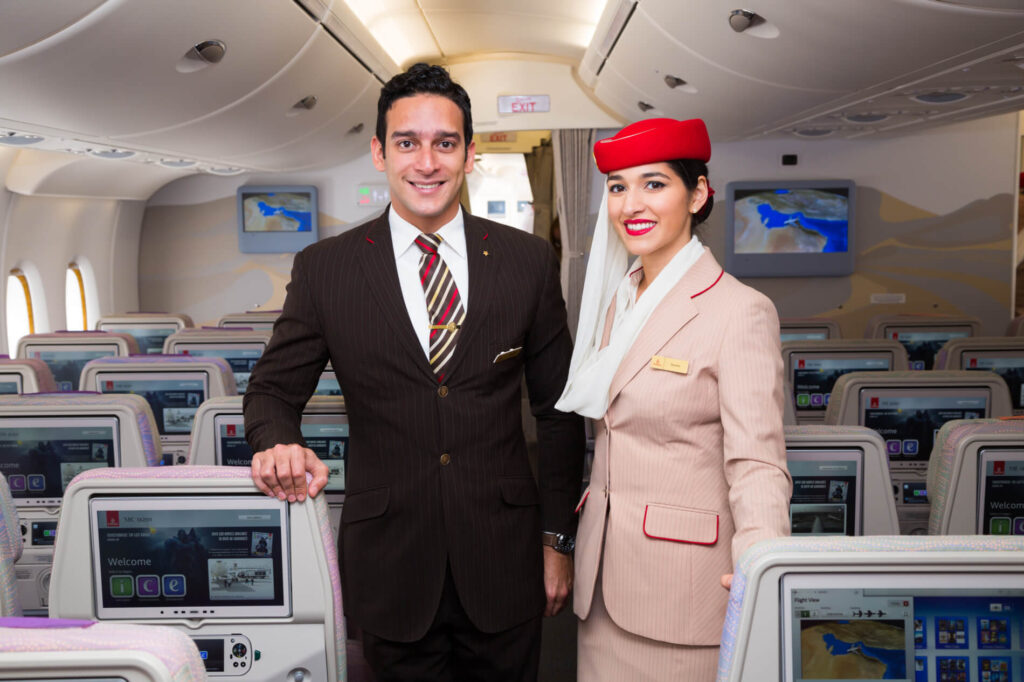Emirates announced that the airline’s Economy class passengers would be able to buy adjacent seats, as the Dubai-based carrier “introduced this new seat product on the back of customer feedback, addressing the needs of a range of customers seeking extra privacy and space.”
The ability to purchase adjacent seats will be only offered to customers that have a confirmed booking and will only be offered for purchase at check-in prior to their departure. “Customers will not be able to pre-book empty seats, as these are subject to availability,” read Emirates announcement on March 1, 2021. According to the airline, the option will cost passengers between AED200 and AED600 ($55 and $165) without taxes, per one empty seat.
“This includes couples who wish to have the entire row to themselves (maximum of three seats in the same row), parents traveling with in-lap infants, or those who simply want the added assurance of more space while traveling during pandemic times,” Emirates described its target audience.
Throughout the current pandemic, many airlines opted to keep the middle seat open in a way to make passengers feel safer. A pioneer of some sort was Frontier Airlines, a United States-based low-cost carrier. The airline announced that it would offer passengers to purchase the middle-seat, starting at $39 in early May 2020. The move, which the airline’s chief executive officer (CEO) Barry Biffle indicated was done to offer “extra peace of mind or simply additional comfort,“ quickly backfired. Not shortly after, Frontier back-tracked its decision following criticism from peers in the industry.
“We recognize the concerns raised that we are profiting from safety and this was never our intent. We simply wanted to provide our customers with an option for more space,” commented Biffle in May 2020, once the airline decided to ax the short-lived policy.
ARTICLE: The unwanted child Middle seat: sacrifice or just smokescreen?
Differentiating opinions
Opinions are split regarding the question of distancing measures on an aircraft. Especially as the crisis continued and more airlines decided to once seat passengers in the middle.
For one, United Airlines implemented a number of efforts to ensure a proper distance between passengers is kept in April 2020. Measures included restricting seat selection ahead of the flight or blocking out adjacent seats from the booking process and were set to last until May 31, 2020.
As the pandemic continued to ravage demand for air travel, social distancing measures were slowly set aside.
“Blocking middle seats is a PR strategy, not a safety strategy,” stated United Airlines Chief Communications officer Josh Earnest on July 1, 2020. The Chicago-based airline was not the only one to relax its measures. American Airlines (A1G) (AAL) and Southwest Airlines (LUV), which at first continued to stick to the policy of ensuring adequate distance between passengers, also backtracked their decisions.
Delta Air Lines, interestingly, stuck to its guns – the airline extended the blockade of the middle-seat until at least April 30, 2021. The move not only improved Delta’s image in front of its passengers but also allowed the airline to improve revenue-generating opportunities as customers were more willing to “pay a premium for the Delta difference,” claimed the president of the carrier, Glen Hauenstein on January 14, 2021.
“Following [distancing measures] will mean taking 50 percent of economy seats out – it doesn’t stack up for anybody to do that,” stated President of Emirates, Tim Clark at the opening session of Arabian Travel Market (ATM) in June 2020. According to Clark, leaving the middle seat open is a solution that is neither economically viable nor sustainable.
“We have introduced a number of protocols to ensure inflight hygiene,” he added, concluding that the “air onboard the aircraft is very clean.”
